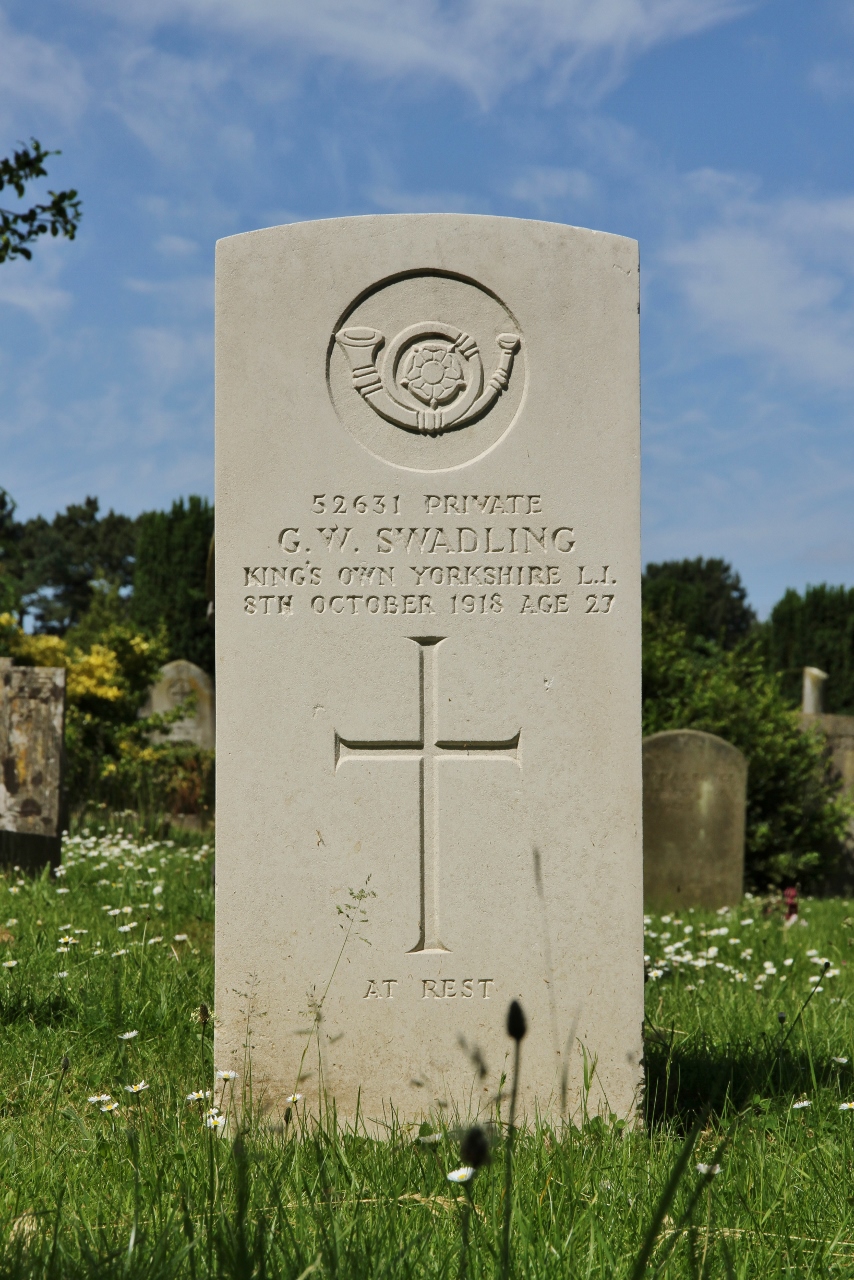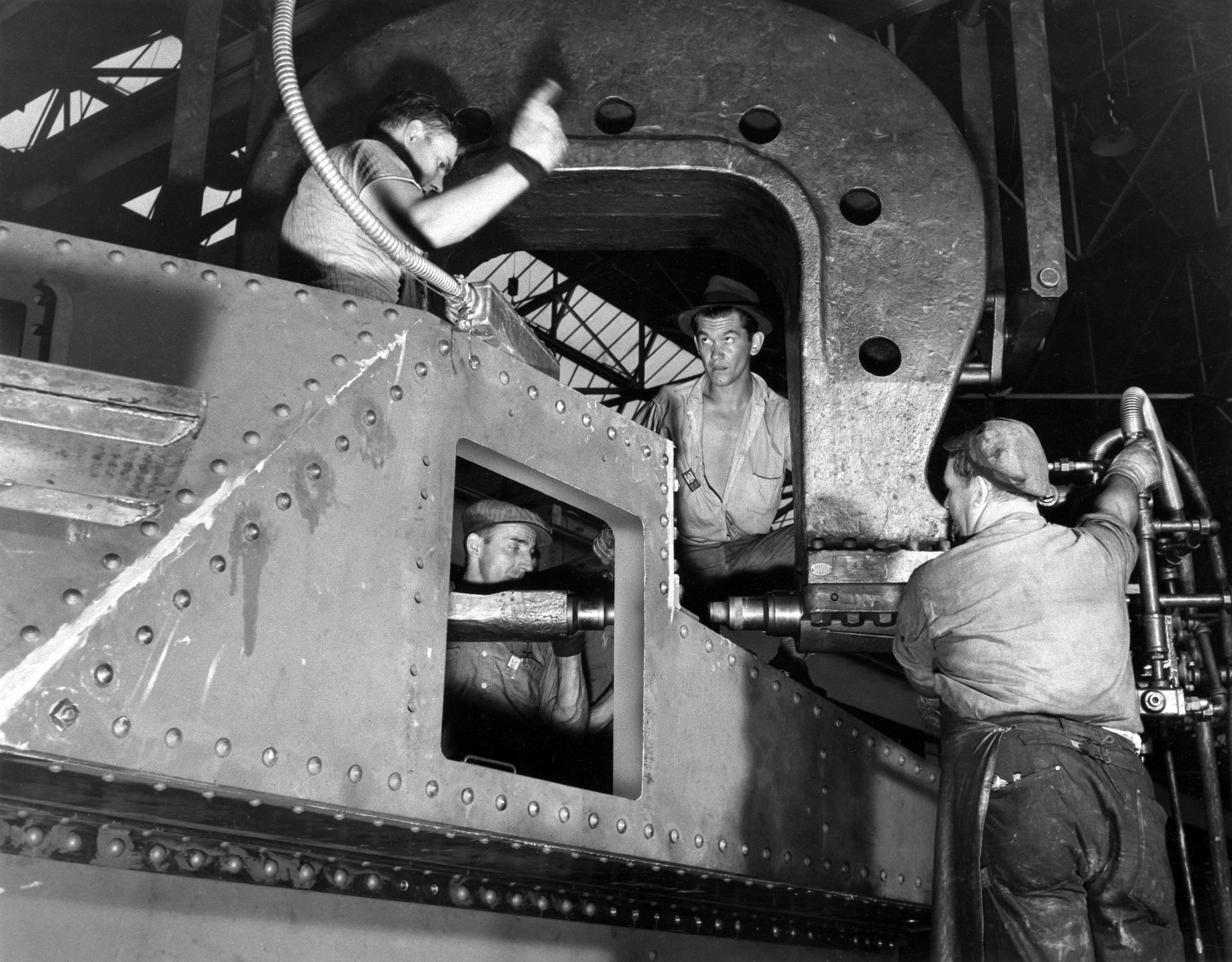|
254th Indian Tank Brigade
The 254th Indian Tank Brigade was an armoured brigade of the Indian Army during World War II. This brigade was originally raised at the cavalry depot at Risalpur in India with effect from 1 April 1941 as the 4th Indian Armoured Brigade. In October 1941, the brigade was redesignated as the 254th Indian Armoured Brigade, and then from 10 September 1942 it was retitled as the 254th Indian Tank Brigade. The brigade was part of the Fourteenth Army and saw action in the Burma Campaign. The 254th Tank Brigade's tactical sign was a symbol that looks like black railway tracks disappearing into the distance, on a red triangle. The brigade fought with the 5th and 7th Indian Infantry Divisions in Burma and was involved in the Battles at Imphal, Kohima, Kyaumaung Bridgehead, Meiktila, and the Rangoon Road. In June 1945, the brigade moved back to India. The Brigade's designation changed to 3rd Indian Independent Armoured Brigade on 1 December 1945, then in June 1946 to 3rd Indian Armoured ... [...More Info...] [...Related Items...] OR: [Wikipedia] [Google] [Baidu] |
British Raj
The British Raj (; from Hindi ''rāj'': kingdom, realm, state, or empire) was the rule of the British Crown on the Indian subcontinent; * * it is also called Crown rule in India, * * * * or Direct rule in India, * Quote: "Mill, who was himself employed by the British East India company from the age of seventeen until the British government assumed direct rule over India in 1858." * * and lasted from 1858 to 1947. * * The region under British control was commonly called India in contemporaneous usage and included areas directly administered by the United Kingdom, which were collectively called British India, and areas ruled by indigenous rulers, but under British paramountcy, called the princely states. The region was sometimes called the Indian Empire, though not officially. As ''India'', it was a founding member of the League of Nations, a participating nation in the Summer Olympics in 1900, 1920, 1928, 1932, and 1936, and a founding member of the United Nations in San F ... [...More Info...] [...Related Items...] OR: [Wikipedia] [Google] [Baidu] |
Reginald Scoones
Major General Sir Reginald Laurence Scoones, (18 December 1900 – October 1991) was a British Army officer who served during the Second World War and its aftermath. His older brother was General Sir Geoffry Scoones. Early years Reginald Scoones was born in 1900 in the parish of Heston, in Hounslow, Middlesex, England, where his father, Fitzroy Maurice Favre Scoones, was serving as a Major in The Royal Fusiliers (City of London Regiment). The family, which included his mother, Florence (born in New South Wales, Australia), and older brothers Geoffry Allen Percival Scoones, Thomas Cohn Scoones (who would be commissioned as a Second-Lieutenant from the ranks of the London Regiment and awarded the Military Cross during the First World War while serving as an officer in the Gordon Highlanders, being promoted to Lieutenant, and acting Captain while in command of a company and then while employed as an Adjutant at the Corps Infantry School from 23rd September, 1918, and as an Aide ... [...More Info...] [...Related Items...] OR: [Wikipedia] [Google] [Baidu] |
4th Bombay Grenadiers
The Grenadiers is an infantry regiment of the Indian Army, formerly part of the Bombay Army and later the pre-independence British Indian Army, when the regiment was known as the 4th Bombay Grenadiers. It has distinguished itself during the two world wars and also since the Independence of India. The regiment has won many battle honours and gallantry awards, and is considered to be one of India's most decorated regiments with three Param Vir Chakra awardees in three different conflicts. History Early history The oldest grenadier regiment of the armies in the Commonwealth belongs to the Indian Army. The concept of 'Grenadiers' evolved from the practice of selecting the bravest and strongest men for the most dangerous tasks in combat. The Grenadiers have the longest unbroken record of existence in the Indian Army.Sharma, p. 75 The history of the Indian Grenadiers is linked to the troops recruited for the army of the Bombay Presidency. The very first mention of a grenadier compan ... [...More Info...] [...Related Items...] OR: [Wikipedia] [Google] [Baidu] |
7th Light Cavalry
The 7th Light Cavalry previously the 28th Light Cavalry, was a regular army cavalry regiment in the British Indian Army. It was raised in 1784 under the East India Company. The regiment later saw service on the North West Frontier and in World War I and World War II. In 1947, it was allocated to the new Indian Army, where it continues to exist as the 7th Light Cavalry History Formation and early history The history of this regiment can be traced to 1784 when a force of cavalry was hired from the Nawab of Arcot by the East India Company. These regiments subsequently mutinied over pay issues. The regiments involved were disbanded and from their remnants, volunteers formed the 2nd Madras Cavalry. This new regiment would eventually become the 7th Light Cavalry. The title was first changed to that of 3rd Madras Native Cavalry. Under this designation the regiment first saw action during the Third Mysore War in 1790, against Tipu Sultan. The regiment was next in action during the Fo ... [...More Info...] [...Related Items...] OR: [Wikipedia] [Google] [Baidu] |
York And Lancaster Regiment
The York and Lancaster Regiment was a line infantry regiment of the British Army that existed from 1881 until 1968. The regiment was created in the Childers Reforms of 1881 by the amalgamation of the 65th (2nd Yorkshire, North Riding) Regiment of Foot and the 84th (York and Lancaster) Regiment of Foot. The regiment saw service in many small conflicts and both World War I and World War II until 1968, when the regiment chose to be disbanded rather than amalgamated with another regiment, one of only two infantry regiments in the British Army to do so, with the other being the Cameronians (Scottish Rifles). History The regiment was formed on 1 July 1881 through the amalgamation of two regiments of foot and a militia regiment: * 65th (2nd Yorkshire, North Riding) Regiment of Foot, 65th (2nd Yorkshire) Regiment * 84th (York and Lancaster) Regiment of Foot, 84th (York and Lancaster) Regiment * 3rd West York Light Infantry Militia (two battalions) Under the original scheme of amalgamation ... [...More Info...] [...Related Items...] OR: [Wikipedia] [Google] [Baidu] |
King's Own Yorkshire Light Infantry
The King's Own Yorkshire Light Infantry (KOYLI) was a light infantry regiment of the British Army. It officially existed from 1881 to 1968, but its predecessors go back to 1755. In 1968, the regiment was amalgamated with the Somerset and Cornwall Light Infantry, the King's Shropshire Light Infantry and the Durham Light Infantry to form The Light Infantry, which in turn was merged with the Devonshire and Dorset Regiment, the Royal Gloucestershire, Berkshire and Wiltshire Regiment and the Royal Green Jackets to become The Rifles in 2007. History The 51st Foot The 53rd Regiment of Foot was raised in Leeds in 1755 and renumbered the 51st in January 1757. In 1782, in common with other regiments of the line, the 51st was given a "county" designation, becoming the 51st (2nd Yorkshire, West Riding) Regiment of Foot. The title of ''Light Infantry'' was given in honour of its former commander General Sir John Moore in 1809, and in 1821 the regiment was given royal status when ''King's Own' ... [...More Info...] [...Related Items...] OR: [Wikipedia] [Google] [Baidu] |
149th Regiment Royal Armoured Corps
149th Regiment Royal Armoured Corps (149 RAC) was an armoured regiment of the British Army's Royal Armoured Corps that served in the Burma Campaign during World War II. Origin 149th Regiment RAC was formed on 22 November 1941 by the conversion to the armoured role of 7th Battalion of the King's Own Yorkshire Light Infantry (KOYLI).Joslen, p. 497. Raised in 1940, 7th KOYLI had been serving with 207th Independent Infantry Brigade (Home), a Home Defence formation in Essex that was broken up in August 1941 and its battalions transferred to the RAC. In common with other infantry units transferred to the Royal Armoured Corps, all personnel would have continued to wear their KOYLI cap badge on the black beret of the RAC. Burma Campaign 7th KOYLI arrived in India on 24 October 1941, and was assigned for conversion to the Heavy Armoured Brigade, which was soon afterwards redesignated 50th Indian Tank Brigade. 149 RAC moved to the Manipur Road area in April 1944, and came under the comm ... [...More Info...] [...Related Items...] OR: [Wikipedia] [Google] [Baidu] |
Lee Tank
The M3 Lee, officially Medium Tank, M3, was an American medium tank used during World War II. The turret was produced in two forms, one for US needs and one modified to British requirements to place the radio next to the commander. In Commonwealth of Nations, British Commonwealth service, the tank was called by two names: tanks employing US pattern Gun turret, turrets were called "Lee," named after Confederate States of America, Confederate general Robert E. Lee, while those with British pattern turrets were known as "Grant," named after Union (American Civil War), Union general Ulysses S. Grant. Design commenced in July 1940, and the first M3s were operational in late 1941. The US Army needed a medium tank armed with a 75mm gun and, coupled with the United Kingdom's immediate demand for 3,650 medium tanks, the Lee began production by late 1940. The design was a compromise meant to produce a tank as soon as possible. The M3 had considerable firepower and good armor, but had seri ... [...More Info...] [...Related Items...] OR: [Wikipedia] [Google] [Baidu] |
3rd Carabiniers
The 3rd Carabiniers (Prince of Wales's Dragoon Guards) was a cavalry regiment of the British Army. It was formed in 1922 as part of a reduction in the army's cavalry by the amalgamation of the 3rd Dragoon Guards (Prince of Wales's) and the Carabiniers (6th Dragoon Guards), to form the 3rd/6th Dragoon Guards. It was renamed the 3rd Carabiniers (Prince of Wales's Dragoon Guards) in 1928 and amalgamated with the Royal Scots Greys (2nd Dragoons), forming the Royal Scots Dragoon Guards (Carabiniers and Greys) in 1971. History Inter-war The regiment was formed in 1922 as part of a reduction in the army's cavalry by the amalgamation of the 3rd Dragoon Guards (Prince of Wales's) and the Carabiniers (6th Dragoon Guards), to form the 3rd/6th Dragoon Guards. Both regiments were based in India at the time of their amalgamation; the newly formed regiment departed in 1925 for Britain. It regained its carabinier association in 1928, when it was renamed the 3rd Carabiniers (Prince of Wales's ... [...More Info...] [...Related Items...] OR: [Wikipedia] [Google] [Baidu] |
Battle Of Meiktila
A battle is an occurrence of combat in warfare between opposing military units of any number or size. A war usually consists of multiple battles. In general, a battle is a military engagement that is well defined in duration, area, and force commitment. An engagement with only limited commitment between the forces and without decisive results is sometimes called a skirmish. The word "battle" can also be used infrequently to refer to an entire operational campaign, although this usage greatly diverges from its conventional or customary meaning. Generally, the word "battle" is used for such campaigns if referring to a protracted combat encounter in which either one or both of the combatants had the same methods, resources, and strategic objectives throughout the encounter. Some prominent examples of this would be the Battle of the Atlantic, Battle of Britain, and Battle of Stalingrad, all in World War II. Wars and military campaigns are guided by military strategy, whereas bat ... [...More Info...] [...Related Items...] OR: [Wikipedia] [Google] [Baidu] |




